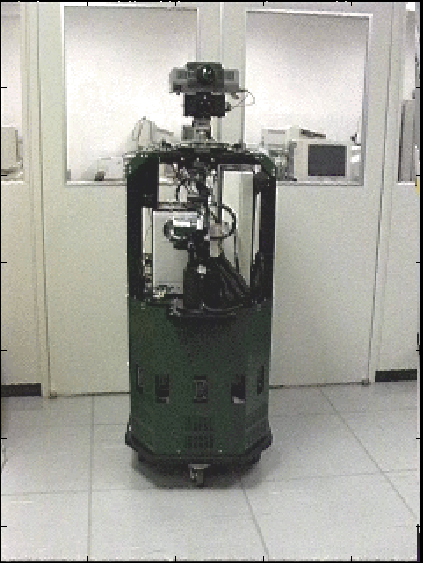


Learning Robot
Abstract:
Can we expect the time will come when a robot can acquire a
natural language like a child?
Although controversial, we believe it will [
1].
The research of a learning robot aims at realizing an artificial
brain that exhibits such intelligence that a child exhibits.
Born in an unknown environment, a learning robot is expected to
acquire skills how to act in the environment, the knowledge how
the environment is like, and elementary capabilities of
language processing.
The research will be done in the three stages: skill acquisition,
pattern-based thinking, and symbol-based thinking.
We use neural and evolutionary computations as key technologies.
Skill acquisition should go ahead of language acquisition.
Among basic skills are parrot-like speaking using their own voices,
exploratory wandering of an environment, map building using
fragmentary data of the environment, arm control through
inverse kinematics learning, etc.
As for parrot-like speaking, after making robot's own voice by
analyzing voice owner's speech data, we implemented a mimicking
mechanism which generates robot's own speech as close to target
speech as possible [2].
Here our optimal vector quantizer [3] is used for
clustering tasks.
Figure 1:
Learning robot Robin-3
|
As for wandering, our experiments showed that a neural version
of a classifier system [5] quickly learns the wall
following task from scratch (Fig. 2).
As for map building, we proposed a learning procedure which
generates a moderately succinct wall map from fragmentary
sonar data obtained during exploration of the environment
[4].
Figure 2:
Learning example of wall following
|
Using a revised classifier system, we will keep investigating a learning
mechanism which can find important concepts through skill acquisition.
Contact: Ryohei Nakano, Email: nakano@cslab.kecl.ntt.co.jp
-
- 1
-
Nakano, R.: AI Renaissance (in Japanese), in AI Capriccio, NTT Press,
pp. 15-27 (1992).
- 2
-
Nakano, R., Ueda, N., Saito, K. and Yamada, T.: Parrot-like speaking using
optimal vector quantization, Proc. of International Conference on Neural
Networks(ICNN '95), pp. 2871-2875 (1995).
- 3
-
Ueda, N. and Nakano, R.: A new competitive learning approach based on an
equidistortion principle for designing optimal vector quantizers,
Neural Networks, Vol. 7, No. 8, pp. 1211-1227 (1994).
- 4
-
Nakano, R., Ueda, N., Saito, K. and Takahashi, M.: Wall map building from
fragmentary sonar data, Proc. of International Workshop Robolearn'96,
pp. 84-89 (1996).
- 5
-
Holland,J.H.: Escaping brittleness: the possibilities of general-purpose
learning algorithms applied to parallel rule-based systems,
Machine Learning Vol. 2,
pp. 593-623 (1986).



This page is assembled by Takeshi Yamada
